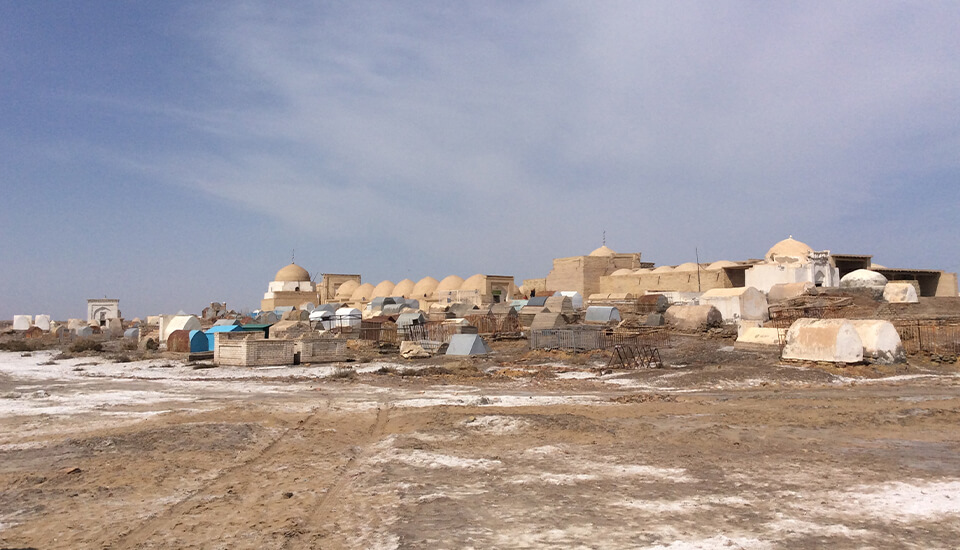Ashgabat
Alem Ferris wheel
State Museum
Fine Arts museum
Wedding Palace
Nisa fortress
Memorial Complex
Ertogrul Gazi Mosque
Neutrality monument
Independence Park
Turkmenbashi Ruhy Mosque
Olympic Village
Ylham Alley
Carpet Museum
Monument of Lenin
Ahal Region
Abivert
Altyn Depe
Annau
Darvaza
Geokdepe
Kowata
Mane baba
Zengi baba
Nedir Shah
Nokhur
Parzdepe
Sarahs baba
Seyit Jemaleddin mosque
Shahrislam
Ulug depe
Mary region
40 cupolas
Akcha Kala
Ancient Merv
Badkhyz
Chilburj
Gebeklytepe
Geok Gumbaz
Gurtly Depe
Kharoba Koshuk
Talkhatan Baba
Yekedeshik
Dashoguz region
Ashyk Aydyn Pir
Devkeshen
Ismamit ata
Kalaly-gyr
Kaplankyr Nature Reserve
Kunya-Urgench
Damla
Balkan region
Dehistan
Yangikala
Awaza
Gozli ata
Kemal ata
Mashat ata
Paraw bibi
Lunar Mountains
Shevlan Baba
Igdy kala
One of the places considered so sacred is the Ismamyt Ata Memorial Complex. It is located in the Zaman village of Georogly district of Dashoguz province. Ismamit Ata consists of a complicated architectural complex and was built on the ruins (170x170m) of Eshretgala belonging to the XI-XII centuries. Therefore, the fundamental level of the buildings are different, that is, their foundations belong to different periods.
According to popular legend, Isim Sahab, the son of Musaib Qazi Sahab, one of the companions and commanders of the Prophet Muhammad, came to Khorezm to preach Islam in Khorezm in the VII century. At that time, Sultan Mahmud ruled the city of Eshretgala. His prestige among the people was very great. Isim Sahab met Sultan Mahmud. The sultan was interested in what Islam was preaching. When he was said that Islam stipulates to be pure-hearted in believing in one God, sultan did not oppose the preaching of Islam, and saying that they also believe in one God. Soon after, Sultan Mahmud himself converted to Islam with his relatives. Sometime later, Sultan Mahmud came to Isim Sahab and explained that his name would be lost because he had no son and that his descendants would not be able to continue, and asked him to unite his names so that he would be left behind. The name Sahab agreed and so was done. The name Sahab lived there for the rest of his life and was buried in Eshretgala even after his death. Since then, the complex has remained Isymmahmyt-Ysmamyt.
The religious significance of Ismamit Ata was very important, which is why visitors from all parts of Khorezm come here and the inhabitants of all the provinces – Turkmens, Uzbeks, and Kazakhs – buried their deceased ones. A large cemetery (4-5 ha) surrounds the Ismamyt Ata Complex. The largest tomb in the cemetery is the tomb of Ismamit Ata (Isim Sahab). Sultan Mahmud must also have been buried there, but his tomb has not been preserved.
The complex consists of two large domes, a mausoleum for the pilgrims, a prayer room, a prayer room, and a mausoleum of Ismamit Ata; a facility called the Dashkoche, built in the form of a long corridor with seven domes; the corridor connecting it with the rest of the complex; winter and spring mosques; the kitchen; a hanaka or madrasa.
